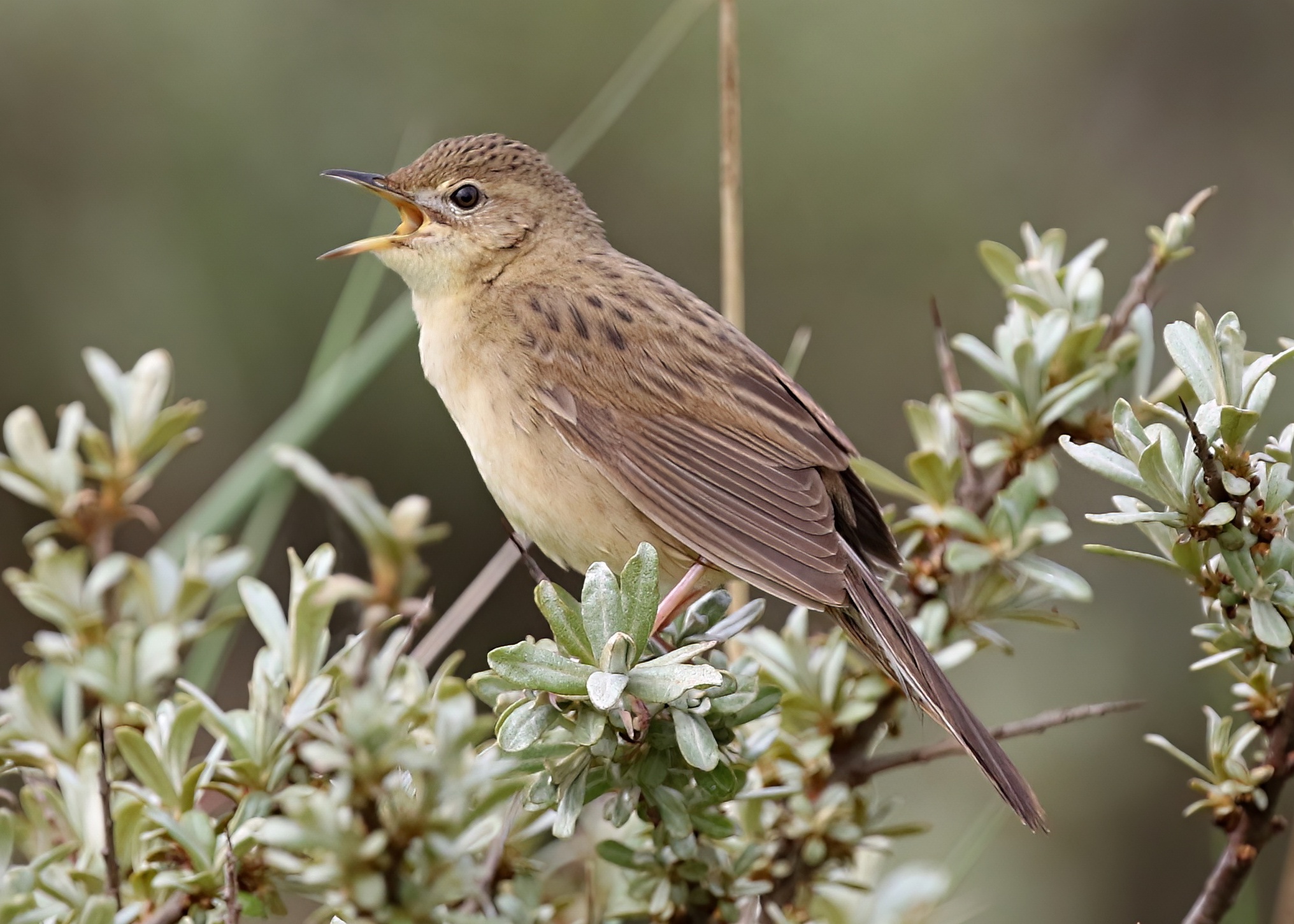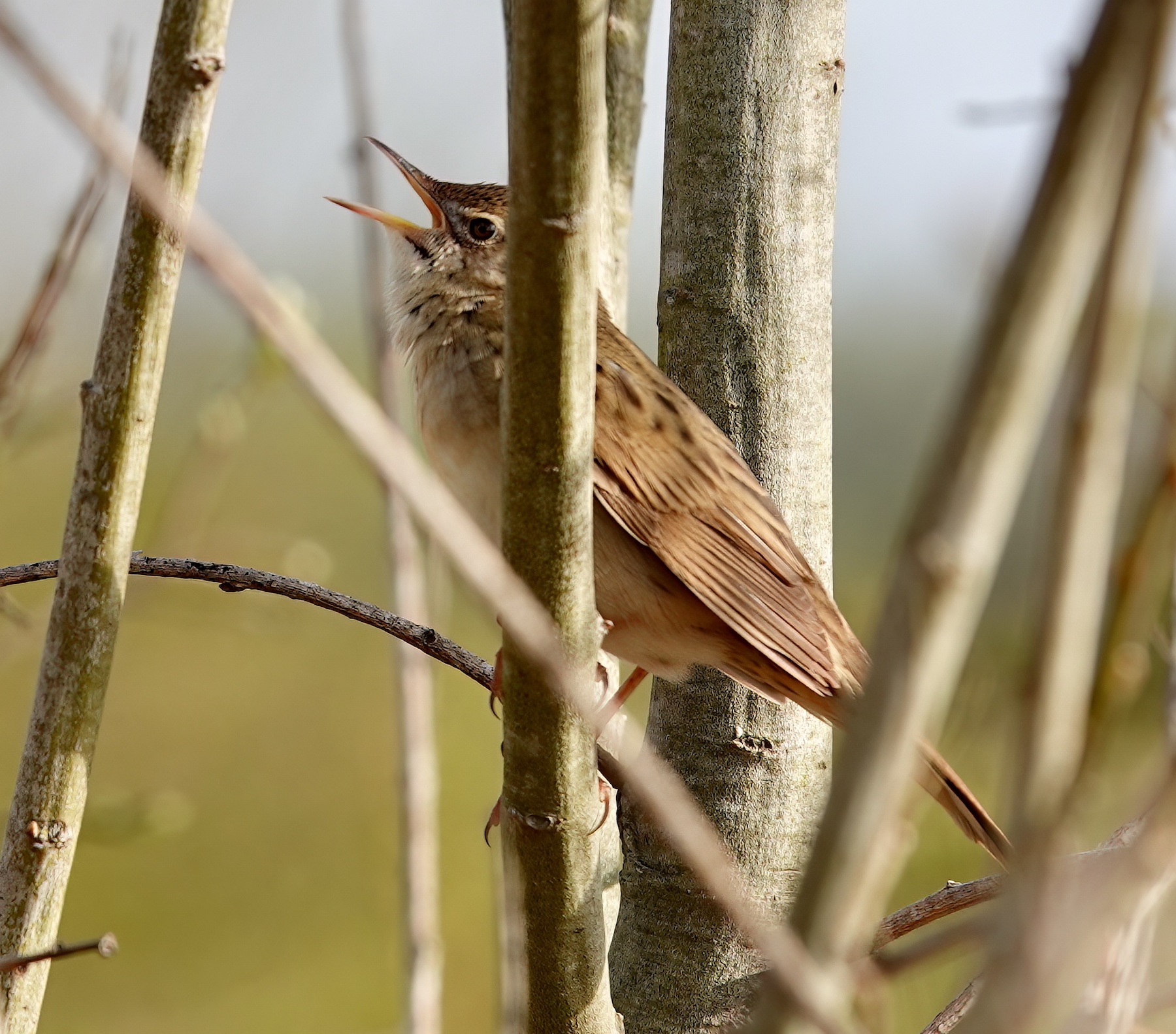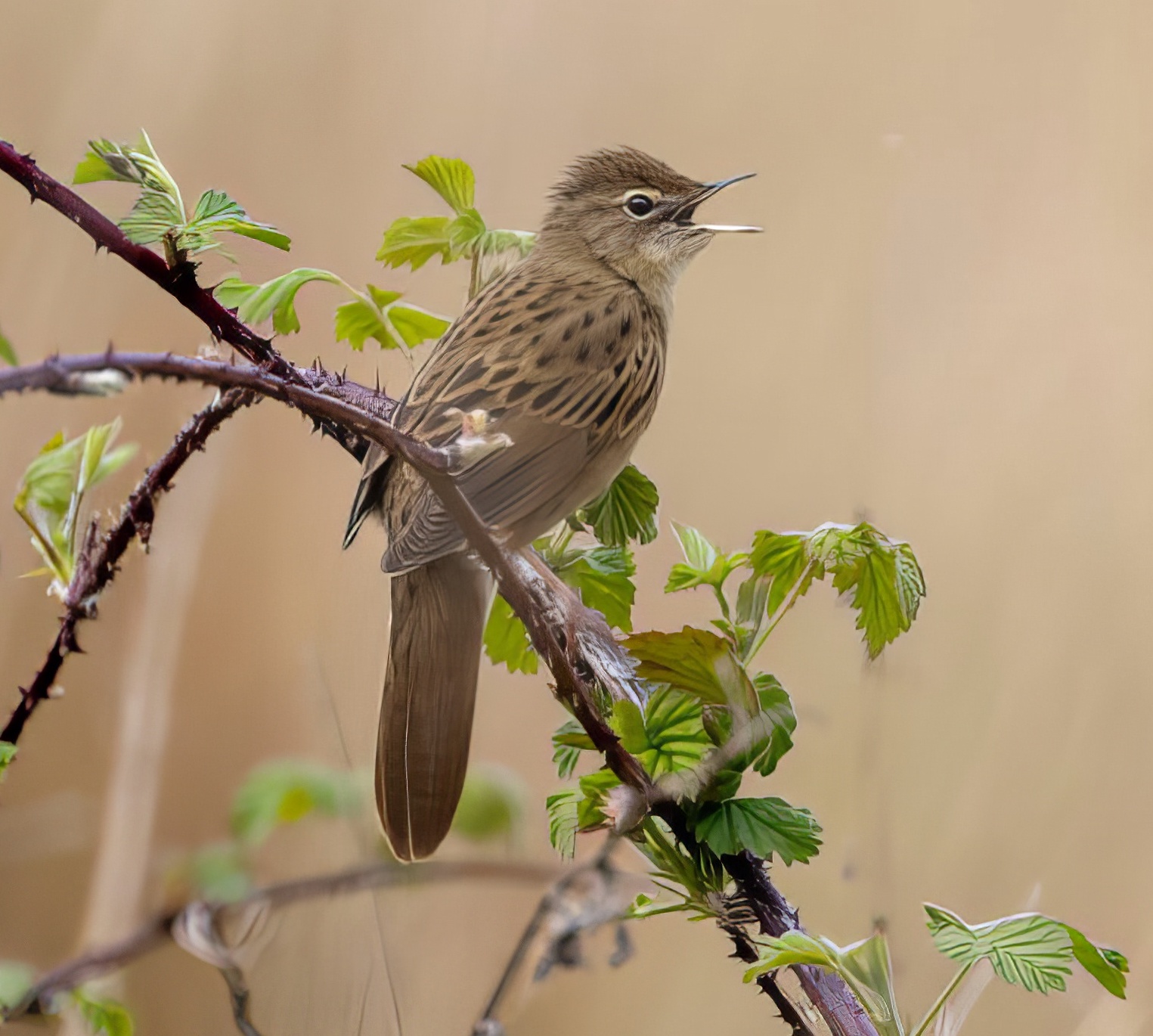Grasshopper Warbler Locustella naevia
Scarce summer visitor and passage migrant. Decline in late 20th century.



The reeling of a “Gropper” is a delight to hear on a spring evening. Judging from Cordeaux (1872) and Smith and Cornwallis (1955), it seems it has always been scarce in Lincolnshire, but it may have gone through a temporary increase by exploiting young forestry plantations during the boom in coniferous afforestation from the 1920s through to the 1970s. It is also found along the coast in scrubby reed beds and buckthorn. The Atlas put the population at 150-200 pairs in the 1980s and suggested it had declined since the 1960s. In the BTO Atlas 2007-2011 it was confirmed breeding in only six 10km squares, down from 11 in the 1980s. Overall the BBS index for England shows it has declined by some 44% since 1994. The Lincolnshire population is difficult to estimate but is probably less than 50 pairs. On arrival in spring it can turn up in any hedge reeling for a day before moving on which may cause it to be overstated in BBS. First birds arrive in early April and LBR shows that the best showing in the five years to 2018 was of eight singing at Alkborough Flats in May 2017. Other sites which report more than single birds regularly include Barton Pits, Donna Nook, the Rimac area of Saltfleetby-Theddlethorpe Dunes NNR, Anderby and Gibraltar Point. Passage is usually over by late September, but Gibraltar Point had a late one on October 18th, 2015.
(Account as per new Birds of Lincolnshire (2021), included December 2022)
